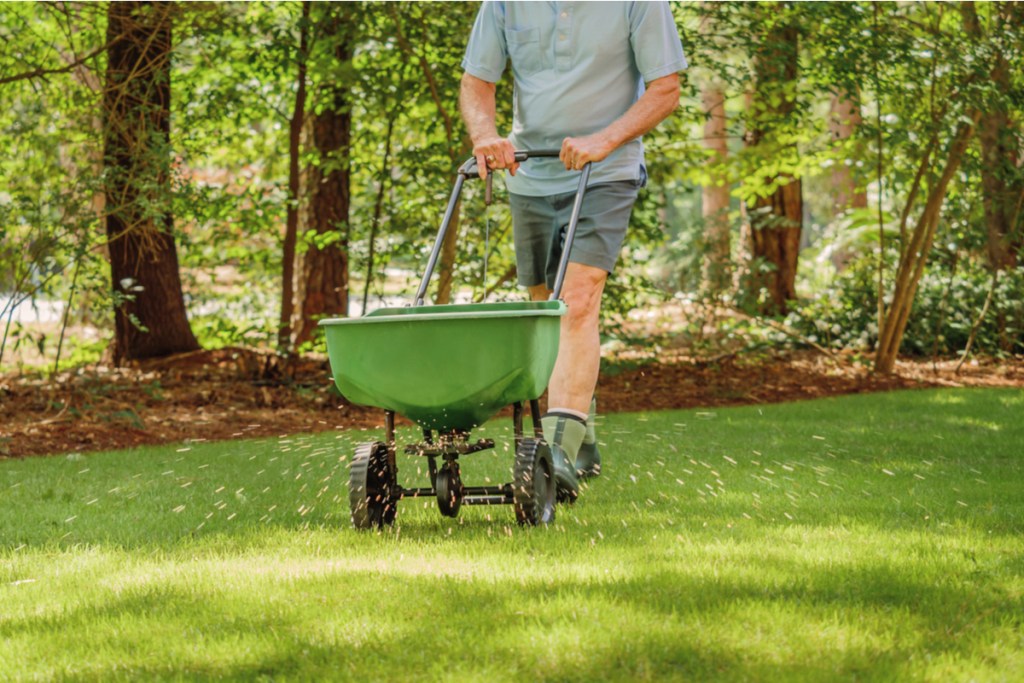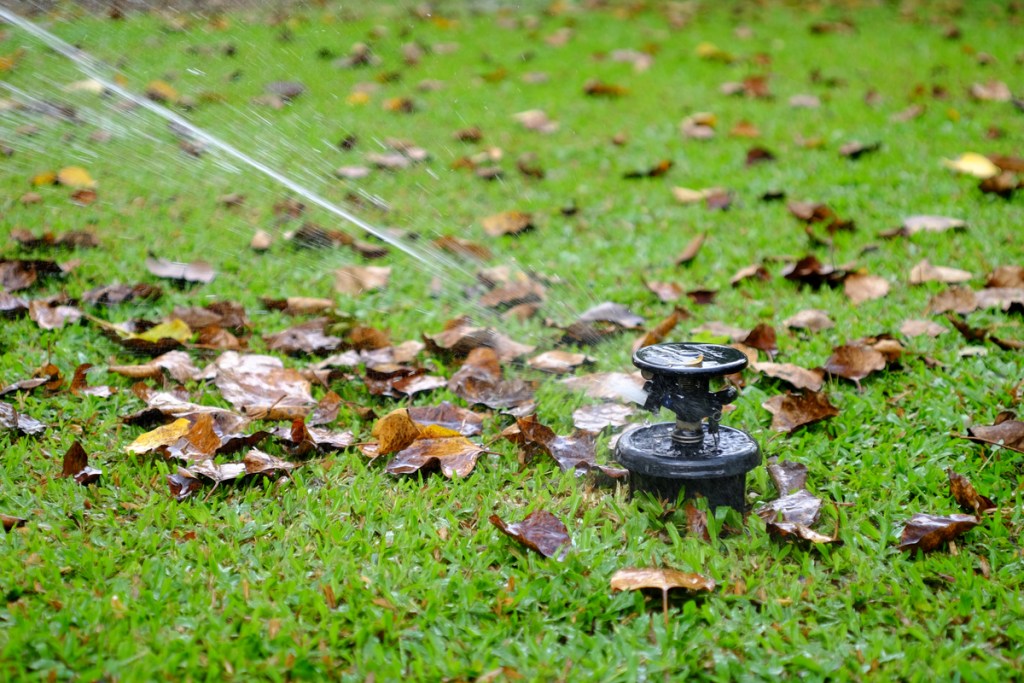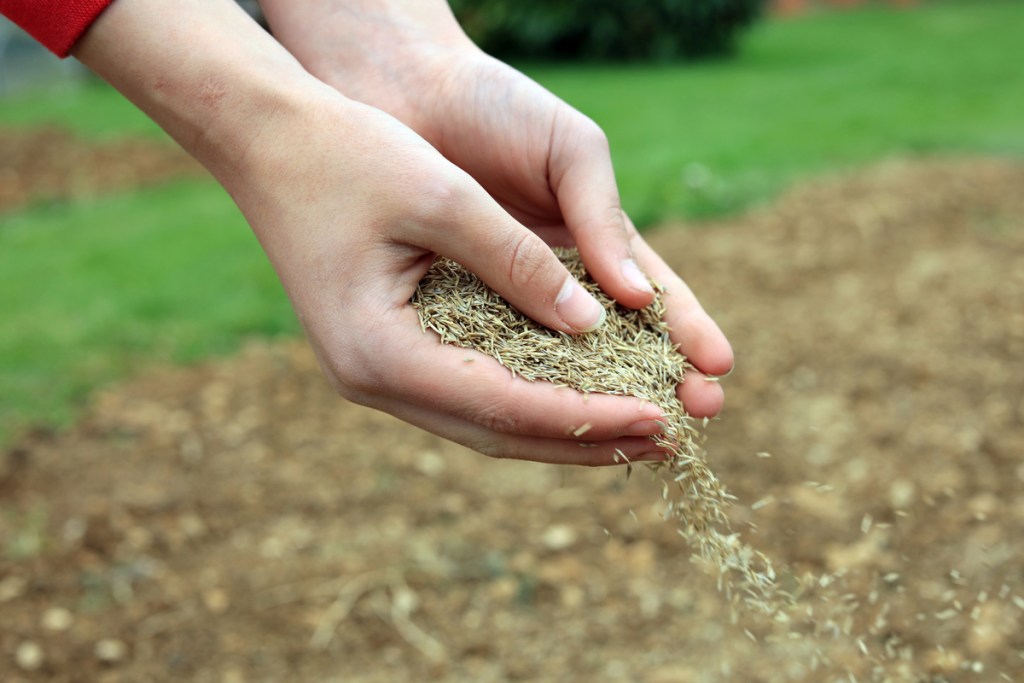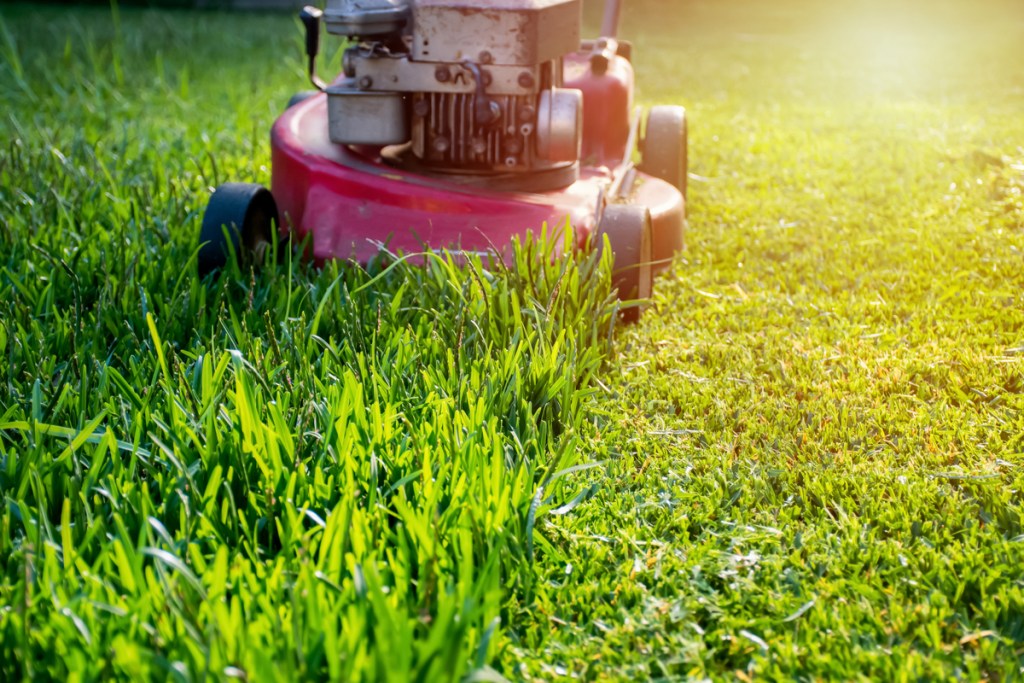The details make all the difference when it comes to lawn care. Some homeowners are content to mow the lawn when it grows too high, and perhaps water it during dry weather. This is enough to keep your lawn alive, but not enough to make it thrive. Keying in on a few lawn care details will vastly improve your lawn’s health and appearance, and it starts in the fall.
After an intensive growing season, your grass is ready for a change. For warm season grasses like Bermuda and zoysia, that means preparing for winter dormancy. For cool season lawns like Kentucky bluegrass, perennial ryegrass, and tall fescue, the mild temperatures stimulate new growth. All grasses benefit from a sound fall lawn care program in order to repair summer damage, head into winter healthy, and get a running start on next spring’s wakeup call. Not sure what this entails? We have the answers! Here's everything you need to know about lawn care in the fall season.

Boost fertility
Whether you have a warm season or cool season lawn, fall is prime time for fertilization. Cool season grasses need a fresh application of nitrogen-rich fertilizer to thicken up the foliage. Warm season grasses benefit from a final feeding two months prior to the first fall frost date. This will boost stores for winter and ensure a faster transition when the weather breaks in spring.

Leave the leaves
An often overlooked part of soil health is the free lawn food that falls from the trees. Fall leaves can boost lawn fertility and add large quantities of beneficial organic matter to the soil if you leave them in place, but don’t let them smother the lawn. Here's what to do.
Step 1: Mulch the leaves with a lawn mower.
Step 2: Make sure at least half an inch of grass is visible underneath the leaves. If the leaves are too thick, they may smother the grass.

Adjust irrigation
Don’t let the cool, crisp autumn air fool you, it’s dry out there. If you aren’t getting rain, your lawn is thirsty. As long as it’s warm enough for the grass to grow, it needs about an inch of water per week from rainfall and irrigation combined. Insufficient water leads to slowed growth, but more importantly feeder roots may be damaged. So keep the sprinklers at the ready and add a little water during dry spells.

Rejuvenate cool season grass
Hot summer weather is stressful to cool season grasses. If they’re damaged, they don’t have the capacity to regrow easily. When the heat subsides, take action.
Step 1: Aerate your lawn with a core aerator a few days after heavy rain. Doing so also prepares the soil surface to replace thin or dead patches by overseeding, loosens compacted soil, and improves airflow to the roots.
Step 2: Apply grass seed starting four to six weeks before your first frost.
Step 3: Keep your seeds moist by lightly watering them daily for the first two weeks.
Step 4: Avoid mowing the lawn for the first month after seeding.

Prevent cool season weeds
Those who don’t plan on seeding in the fall can apply pre-emergent. This class of herbicide forms a chemical barrier at the soil line, preventing seed germination of cool season annual weeds like Poa annua, chickweed, and henbit. The granules are easy to apply with an ordinary lawn spreader, and are activated by rain or irrigation. However, these products also kill grass seeds and young seedlings, and shouldn’t be applied the same season as seeding.

Mow until the grass stops growing
Whether your lawn is made up of warm season or cool season grass, it isn’t helpful to let it remain long through winter. Here's how to properly mow your lawn through fall and into winter.
Step 1: Mow your grass at regular intervals until it stops growing for the season. Doing so will make it more resistant to winter damage and mold problems. Plus, the shorter grass will look better as it emerges next spring.
Step 2: Only cut one-third of the total height of your grass, leaving two-thirds to continue growing. Cutting grass shorter than this causes stress, which leads to a patchy lawn.
Step 3: Slowly decrease how often you mow your lawn as the season progresses. The grass will grow much slower during winter, so your mowing should slow to match it.
Editors' Recommendations
- Growing your own vanilla plant doesn’t need to be difficult: Here’s what you need to know
- Growing cocoa plants in the U.S. is difficult (but not impossible): What we know
- Create a cardinal bird sanctuary in your garden: Grow these plants
- Add these plants to your garden to provide winter food for your local birds
- These plants should be among the first you plant this year





